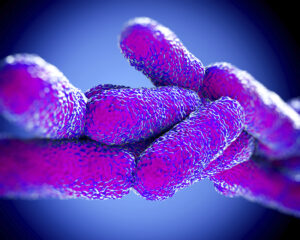Shigella: The Newest Drug Resistant Bug In America
 Shigella sonnei is spread very easily, it is released through stools and can be spread though water and food, or directly from one person to another. All it takes is a tiny trace of the Shigella bacteria to get in your mouth to cause infection. Shigella gets its name from the Danish bacteriologist Carl Olaf Sonnei.
Shigella sonnei is spread very easily, it is released through stools and can be spread though water and food, or directly from one person to another. All it takes is a tiny trace of the Shigella bacteria to get in your mouth to cause infection. Shigella gets its name from the Danish bacteriologist Carl Olaf Sonnei.
According to the Centers for Disease Control and Prevention, Shigella sonnei has become resistant to the antibiotic used to treat it, ciprofloxacin. The CDC has record of 243 cases of shigellosis in all 32 US states and Puerto Rico. They tested 126 of these patients and found 109 cases were resistant to the antibiotic typically used to treat the severity of the bug.
Outbreaks of Shigella are typically associated with contaminated food and water, poor sanitation and crowded living conditions. This bacterium is popular amongst people who travel to developing countries as well as residents living in refugee camps. In the US, it is most commonly seen in daycare facilities, and nursing homes as well as other places where large groups of people live.
Symptoms take around 1 to 7 days after contamination to develop. Symptoms typically include:
-Sudden pain or cramping of stomach
-Fever
-Stools with blood, pus or mucus
-Rectal pain/cramps
-Vomiting and/or diarrhea
-Nausea
Shigella is nothing new. In fact the CDC reports at least 500,000 cases of diarrhea are caused by Shigella every year. Most US cases are contracted outside of the states while traveling, but a recent outbreak of 94 people in San Francisco were linked to the city’s homeless population.
According to Dr. Amy Edwards, an infectious disease specialist at U.H. Case Medical Center located in Cleveland, Ohio, this drug-resistant strain has been impacting other countries for a long time. In fact, she says it is about time that the strain hit America.
Dr. William Schaffner, the chair of preventive medicine at Vanderbilt University in Nashville, Tennessee, said, “This is the next story on yet another bug that has developed resistance to multiple antibiotics. In addition, it’s a global problem because people are traveling abroad acquiring this bug with multiple resistant aspects and bringing it back to us and spreading it in the United States. So there are several new twists about this.” (Read More)
How Dangerous Is Shigella?
The scary thing about Shigella is how easily it is spread from person to person. It takes such tiny traces of the bug to make you very sick. The reason that it is easily contracted is because it is resistant to stomach acids. Thankfully, considering how rapidly the disease spreads it isn’t usually deadly.
CRE or MRSA are far more dangerous to contract, and both have been in the news recently with several outbreaks around the country. Attention was brought to CRE after contaminated endoscopes sickened multiple people at Ronald Reagan UCLA Medical Center, two of which died as a result.
Shigella is a gastrointestinal illness that is more comparable or slightly worse than Salmonella or e. Coli.
With Shigella, most people recover within 2-4 days. In some cases extreme diarrhea leads to dehydration, resulting in the need to be hospitalized and given intravenous fluids.
Young children, the elderly, and those with preexisting conditions or an already weakened immune system are at the greatest risk for getting very sick, and even developing life-threatening illnesses.
The Future Of Antibiotic Resistant Bugs
The White House has a five-year plan in place to fight antibiotic resistance. According to the CDC, antibiotic-resistant bacteria sicken over 2 million Americans every year, of which 23,000 die.
The World Health Organization considers antimicrobial resistance a true global concern that needs to be addressed. A 2014 report published by WHO said, “Without urgent, coordinated action, the world is heading towards a post-antibiotic era, in which common infections and minor injuries, which have been treatable for decades, can once again kill.”
Antibiotic resistance has become more prevalent because patients, doctors and farmers have overused antibiotics for years. We take a lot of antibiotics for granted. Without the effectiveness of these antibiotics many common illnesses could turn disastrous, even life threatening.
The solution? New antibiotics need to be produced and currently available antibiotics need to be used with less frequency.
Treatment For Shigella
Diagnosing Shigella may require a few exams and tests, such as checking white blood cell count to see if there is an elevated level of white blood cells in the body. If you are positive for Shigella treatment involves keeping the body hydrated with plenty of fluids and electrolytes.
Generally, no medications that decrease diarrhea are prescribed, as these can prolong the infection. Although it is known as ‘antibiotic resistant,’ antibiotics may be prescribed to shorten the longevity of the illness and help prevent it from spreading as rapidly. Antibiotics are still effective in a small percentage of the population. If severe nausea prevents you from drinking adequate fluids, IV fluid treatment may be necessary.
Generally, Shigella will go away in less than a week and leave no lasting side effects.
